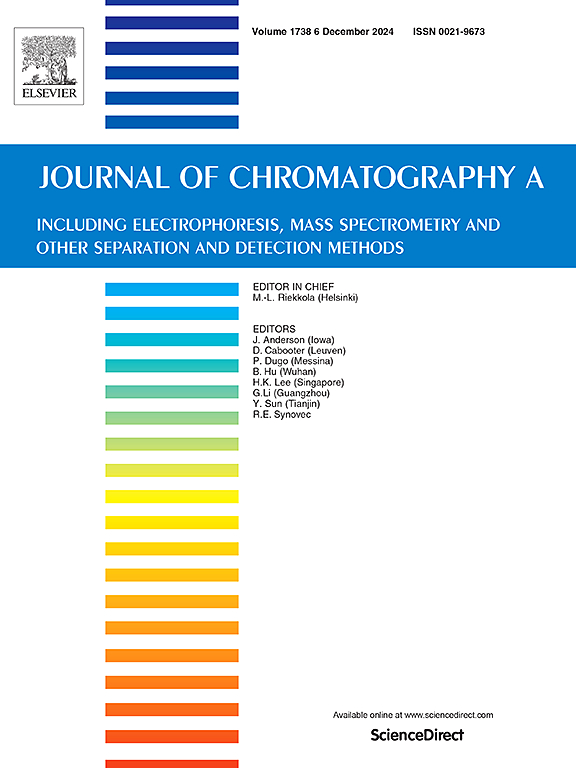从哺乳动物细胞培养液中高效分离和纯化重组治疗蛋白的高选择性分离内含素方法
IF 3.8
2区 化学
Q1 BIOCHEMICAL RESEARCH METHODS
引用次数: 0
摘要
在过去的几十年中,生物制剂和疫苗已成功开发用于治疗多种疾病。这些药物都必须经过高度纯化才能用于临床。单克隆抗体(mAbs)是市场上占主导地位的治疗方式,可使用标准的蛋白 A 亲和平台轻松纯化。然而,目前还没有普遍适用的亲和平台可用于生产其他临床用治疗蛋白。因此,多柱色谱工艺被广泛用于产品纯化。这些工艺需要进行大量优化才能满足所需的产品质量属性,而每一步都会降低最终产量。在这项工作中,我们展示了新型自去除 iCapTag™ 亲和标签,它为重组蛋白的捕获、浓缩和纯化提供了一个新平台。重要的是,该系统提供了一种无标签的目标蛋白,适合研究和临床使用,去除标签的唯一要求是缓冲液 pH 值的微小变化。无需额外的蛋白质、试剂或辅助因子。我们还介绍了使用 iCapTag™ 高效纯化无标记干扰素α2b、ML39 单链可变片段(scFv)和 SARS-CoV-2 穗状蛋白的受体结合域(RBD)的案例研究。这些蛋白由 Expi293 细胞表达和分泌,其 N 端融合了自去除标签。我们只需一个纯化步骤就能获得高纯度(99%)的无标记蛋白质,宿主细胞 DNA、标记前体、高分子量和低分子量杂质都能得到很好的清除。基于这些初步结果,我们建议将 iCapTag™ 作为一种通用捕获平台,用于捕获各种类型的重组治疗蛋白。本文章由计算机程序翻译,如有差异,请以英文原文为准。
Highly selective split intein method for efficient separation and purification of recombinant therapeutic proteins from mammalian cell culture fluid
Biologics and vaccines have been successfully developed over the last few decades to treat many diseases. Each of these drugs must be highly purified for clinical use. Monoclonal antibodies (mAbs), the dominant therapeutic modality on the market, can be easily purified using the standard Protein A affinity platform. However, no generally applicable affinity platforms are available for the manufacture of other therapeutic proteins for clinical use. Thus, multicolumn chromatography processes for widely being used for product purification. These processes demand significant optimization to meet desired product quality attributes, where each step also decreases final yields. In this work, we demonstrate the novel self-removing iCapTag™ affinity tag, which provides a new platform for capturing, concentrating, and purifying recombinant proteins. Importantly, this system provides a tagless target protein, which is suitable for research and clinical use, where the only requirement for tag removal is a small change in buffer pH. No additional proteins, reagents or cofactors are required. We also present case studies demonstrating the use of iCapTag™ for highly efficient purification of untagged interferon alpha 2b, the ML39 single chain variable fragment (scFv), and the receptor binding domain (RBD) of SARS-CoV-2 spike protein. These proteins were expressed and secreted by Expi293 cells with the self-removing tag fused to their N-terminus. We were able to obtain highly pure (> 99 %) tagless protein in a single purification step with high clearance of host cell DNA, tagged precursor, higher and lower molecular weight impurities. Based on these preliminary results, we propose the iCapTag™ as a universal capture platform for diverse classes of recombinant therapeutic proteins.
求助全文
通过发布文献求助,成功后即可免费获取论文全文。
去求助
来源期刊

Journal of Chromatography A
化学-分析化学
CiteScore
7.90
自引率
14.60%
发文量
742
审稿时长
45 days
期刊介绍:
The Journal of Chromatography A provides a forum for the publication of original research and critical reviews on all aspects of fundamental and applied separation science. The scope of the journal includes chromatography and related techniques, electromigration techniques (e.g. electrophoresis, electrochromatography), hyphenated and other multi-dimensional techniques, sample preparation, and detection methods such as mass spectrometry. Contributions consist mainly of research papers dealing with the theory of separation methods, instrumental developments and analytical and preparative applications of general interest.
 求助内容:
求助内容: 应助结果提醒方式:
应助结果提醒方式:


